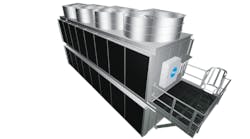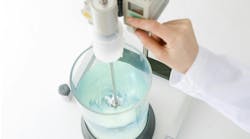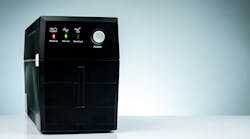Virtually every business, government, and medical facility that uses a computer needs an Uninterruptible Power Supply (UPS). There are millions of these devices in use around the world but unbeknownst to some, the sealed lead acid battery that powers the UPS is replaceable and there are purchasing options to fit different needs. Even for companies with this understanding, most continue to replace their UPS batteries randomly and without a plan. And many, if not all of them, need a system to manage the replacement process.
What is a UPS?
A UPS is a device with a backup battery that provides several minutes of power during a power-related event, like a brownout or blackout. They are typically used with computers, servers, data centers, telecommunications equipment or other electrical equipment to protect sensitive data by allowing enough time for a proper system shutdown. UPS devices differ from an emergency power system or standby generator in that they provide near-instantaneous protection from input power interruptions, by supplying stored energy from batteries. The on-battery run-time of most uninterruptible power sources is relatively short (only a few minutes) but sufficient to start a standby power source or properly shut down the protected equipment. UPS units vary greatly in size, from smaller units designed to protect a single computer or point-of-sale (POS) terminal, to larger units powering entire data centers or buildings.
Purchasing from OEMs
Organizations looking to purchase replacement batteries can do so through the OEM. However, OEMs generally sell through several layers of distribution, so this can complicate what should be a rather straightforward process. This option rarely provides the necessary services to manage the replacement process. Furthermore, OEMs will push customers to purchase an entirely new UPS device when the battery dies. But, you don’t buy a new car when the battery dies, so why purchase the whole UPS? These batteries, just like the battery in your car, can and should be replaced.
The Aftermarket Advantage
Aftermarket suppliers offer many advantages over OEMs including price, quality, and service. And UPS replacement batteries are often fully-compatible with leading UPS OEM’s, including those manufactured by market-leaders APC (by Schneider Electric) and Tripp Lite. They can also offer flexibility in purchasing. For example, customers can buy a single unit or enlist the help of a managed service plan for the timely replacement of thousands of batteries enterprise-wide to ensure all UPS batteries are operating properly, maximizing uptime and profitability. Aftermarket suppliers typically offer savings of 30% or more and are also able to offer better warranties, in some cases up to 12 months or longer, than the standard OEM warranty.
Over time, UPS batteries lose their ability to hold a full charge, leading to shorter runtimes, costly downtime and data loss. But organizations do not need to replace the entire UPS device, just the battery. Timely replacement of these batteries is critical and, if properly planned, can provide important operational and budgetary savings, as well as increased worker productivity and customer satisfaction.










